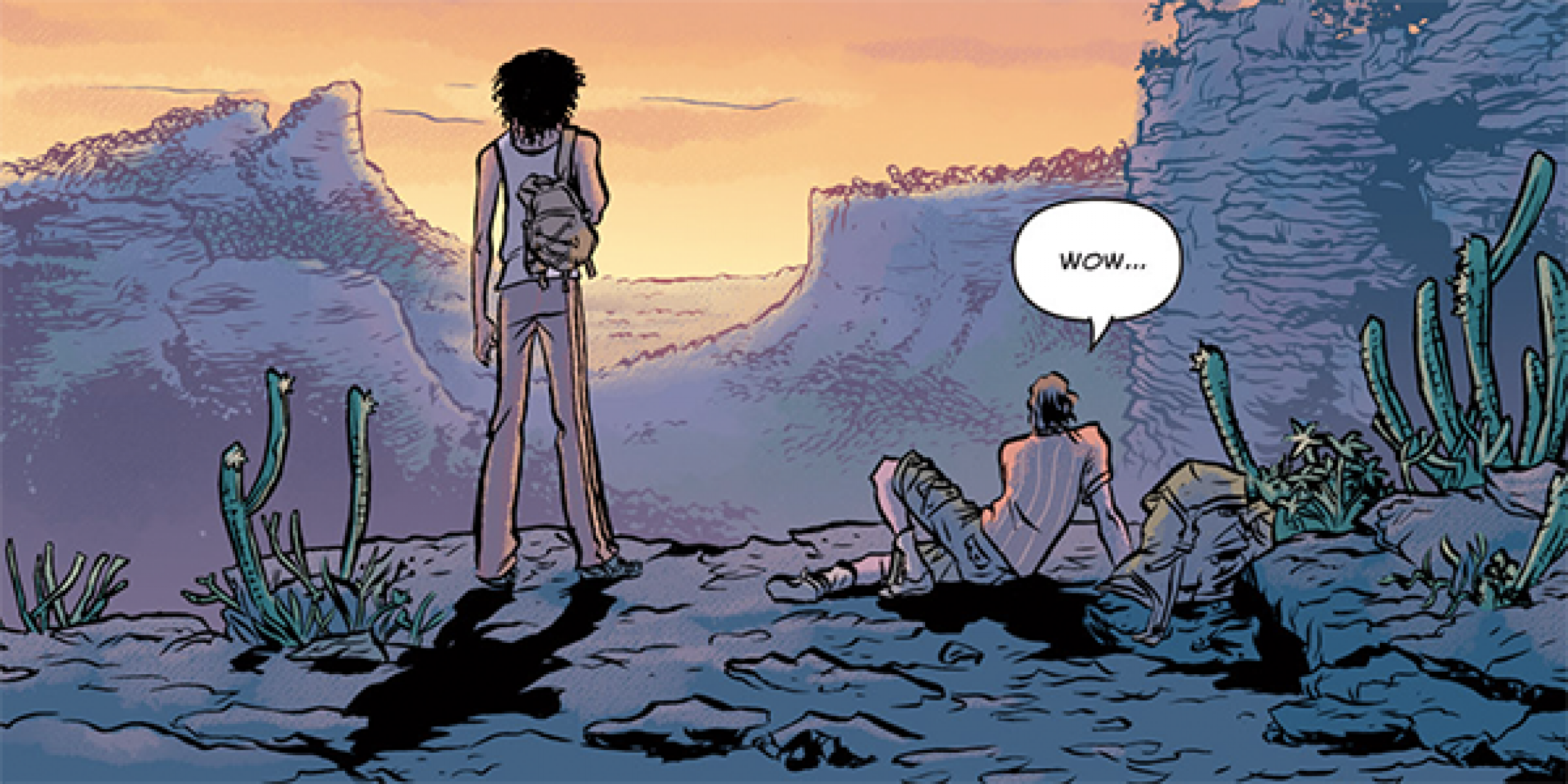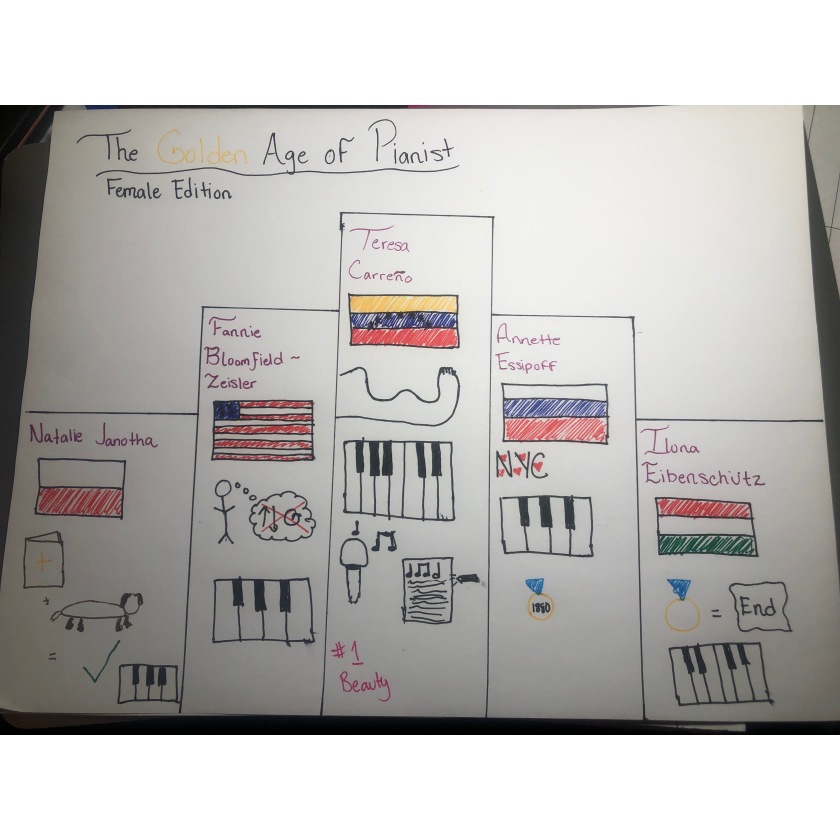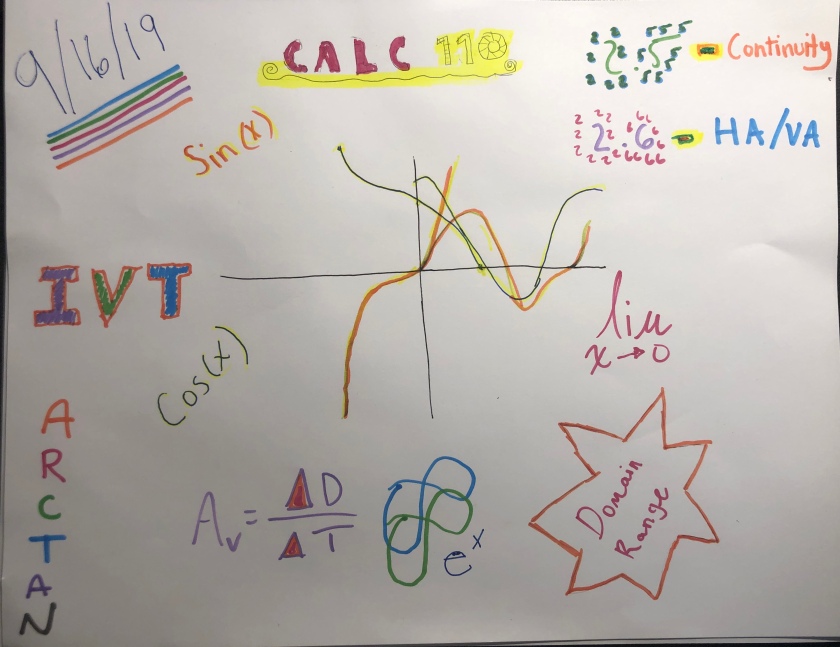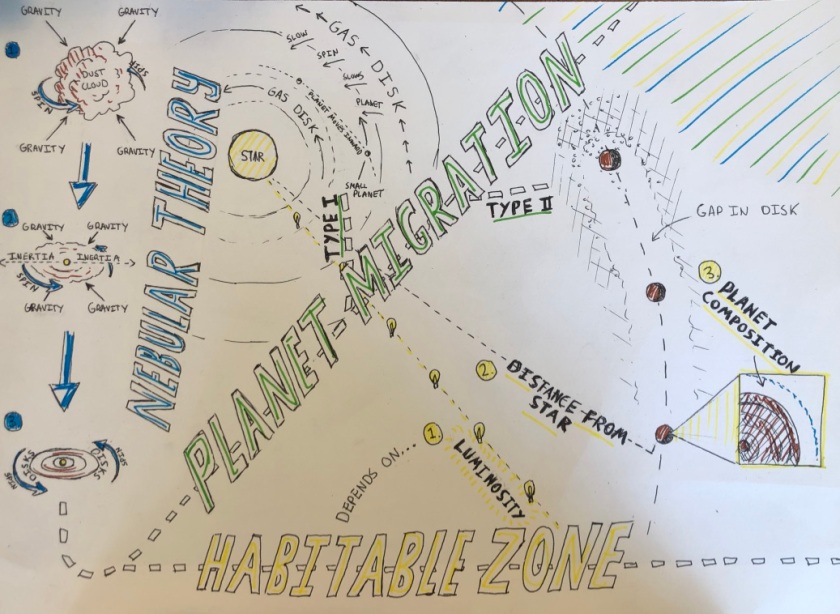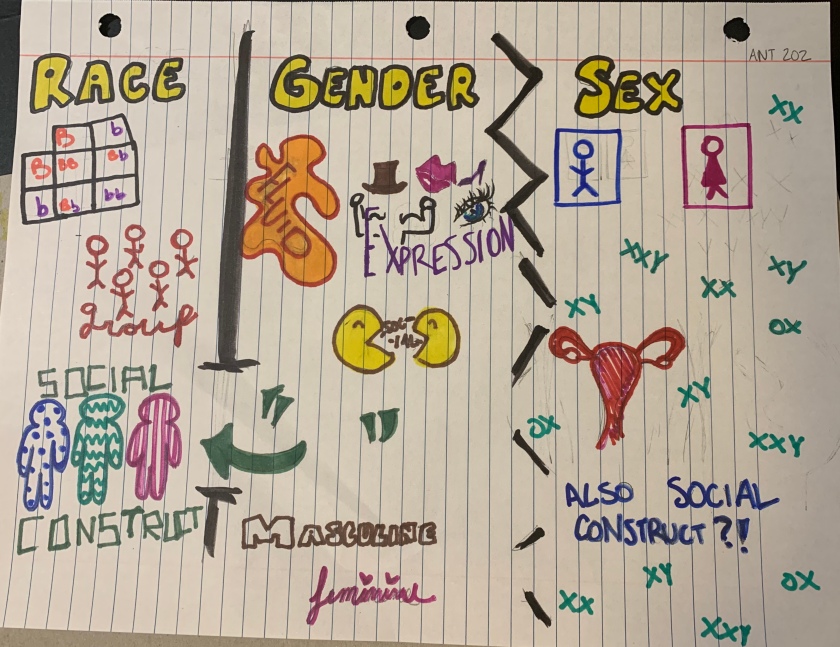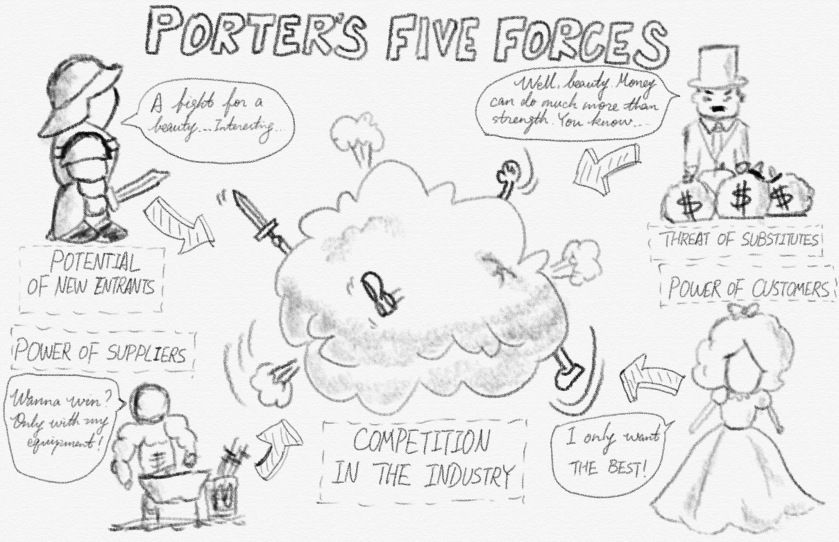Envision in Vision
Reworking my film-class notes into a streamlined display of information seemed like an excellent opportunity to prepare a work of academic art for all the world to enjoy, but alas, what I envisioned — a masterpiece filled with factoids and worthy of my professor’s admiration — was no where to be found when I drew the final line.

It’s spot on my page was snagged by a most ugly-looking mash-up of film facts, yet though I fell short of my unrealistic imagination, I have found a few points to be rather proud of: the color examples for post-filming changes and special effects, my use of “range” bars, and one dapper-looking gentlemen holding a camera. The charm of the lastly mentioned stick-figure is obvious, but I will go into more detail concerning the prior items.
First off, the differences between two pairs of processes — tinting vs. toning and rear projection vs. matte work — were a bit difficult to remember, but the color examples I created juxtaposed them against one another and helped me understand which one was which. Furthermore, several other processes contained variations based on the “range” they existed on, and making vertical or horizontal progressions to show where the values laid on each range produced some somewhat useful visualizations.
Even though my notes are no where near the aesthetic excellence of others, they did help me understand what I was reading a bit better. In the future, I plan to draw out examples alongside my future notes instead of creating them on a whole new sheet of paper to make my visualizations more timely than time-consuming, for every minute counts for a college student.
“I hear and I forget. I see and I remember. I do and I understand.” Having meditated on those powerful words by Confucius and completed my visual-notes assignment, I finally know how to understand the confusing contents of a class curriculum: through doodles and stick-figures. Talk about a win-win situation!
